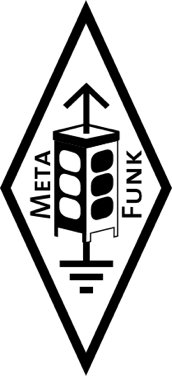Morserino-32
The new way to practice Morse code.
The new M32 Pocket is here!
What is the Morserino-32?
It is a multi-functional Morse device (Keyer, Trainer, Decoder, even Transceiver etc.). It is ideal for learning and practicing Morse code, useful for everybody from beginner to high-speed pro.
All documentation and software is in the Public Domain and can be downloaded from here:
To update your Firmware through your browser,
For M32 1st & 2nd edition: click here
Other update methods are documented in the user manual.
User Manual is here.


Extend M32 Functionality by using PC Software!
You can extend the functionality of the Morserino-32 by using add-on PC software, provided by 3rd parties:
- Training Software for M32, running in your browser (any OS), by Christof, OE6CHD
(runs on Opera, Chrome and Edge, not on Firefox or Safari)
- CW Trainer for Morserino by Enzo, IW7DMH
- Morserino Phrases Trainer by Tommy, OZ1THC
Other „extensions“:
>> Morserino Chat Server: Using the WiFi Transceiver mode, you can converse in Morse Code with other Morserino users across the globe (see video below).
>> QSO Bot by John, M0STQ - see https://qsobot.online/
Features of the Morserino-32 Pocket
Hardware
- Larger, high-contrast colour display (1.9" TFT) for improved readability!
- Tone generation and amplification via digital codec: resulting in a clean sine tone!
- No LoRa as standard – but comparable functionality nonetheless – see the section on software!
Software
- The firmware of the M32 Pocket is based on the same platform as its predecessors, meaning that operation and functionality are virtually
identical - Version 7.0, which will be released at the same time as the M32 Pocket, has a number of new features (and these functions are also
available for existing Morserino-32 devices after a simple firmware update: - An option to flip the display view by 180°: important for left-handed operation of the M32 Pocket.
- Now the 5,000 most common English words can be generated.
- An option to display the output on the display in CAPITAL LETTERS.
- Bluetooth keyboard output: this allows you to practice with VBand (a popular online practice tool) without an additional dongle, but also to use the Morserino as an input keyboard for your mobile phone, tablet or computer!
- The new ESP-NOW WiFi functionality enables Morserinos to communicate with each other without additional hardware (comparable to the LoRa functionality of older generations): peer-to-peer communication on 2.4 GHz, without an access point or router!
M32 Pocket at a glance
General
- Small and lightweight (approx. 100 g) in a 3D-printed housing, with integrated capacitive touch paddle.
- Highly legible 1.9" TFT display.
- Operates with a standard 14500 LiPo battery (inserted into the battery holder on the circuit board).
- Connection for USB-C (for charging the battery and for communication with an external computer).
- Connection for external key (paddle and straight key are supported).
- Connection for transmitter/transceiver (to key the transmitter).
- Connection for headphones or audio input and output for external devices.
- Large, powerful speaker.
- Adjustable frequency and volume of the side tone.
- Easy operation via rotary encoder (with push button function) and additional push button.
- Easy firmware update through the browser (<you need Chrome or Edge for that) . Update through WiFi is also supported.
- Communication with external PC via USB (serial protocol): can be used for voice output, to set all parameters or to remotely control the Morserino functions (implementation of all these functions, e.g. attegmento.org).
CW Keyer
- From 5 to 60 WpM (25 to 300 characters per minute), in Iambic A, B or Ultimatic mode.
- Memory keyer functionality (the memories are programmed via an external PC).
- Paddle polarity switchable.
CW Generator
- Generates random characters, call signs, common CW abbreviations or frequently used English words.
- The length of the output words/character strings can be set.
- Spacing between characters and between words can be increased (to simulate Farnsworth / Wordsworth spacing).
- Can also play text files that can be uploaded via WiFi or Browser plus USB.
- Can also play random words from these files.
- Everything can be sent to other Morserinos via WiFi.
Echo Trainer
- The word played must be repeated, with feedback on whether it is correct or incorrect.
- Same selection options for the prompt as for the CW Generator.
- Number of attempts can be set.
- Straight key is also supported.
Koch Trainer
- Learn characters one by one.
- CW trainer and echo trainer for the characters learned so far.
Transceiver
- Direct communication between Morserinos via 2.4 GHz (ESP-NOW technology).
- WiFi transceiver allows communication via the Internet and connections via chat servers or connections to QSObots.
- Support for iCW and VBand via the Internet.
Decoder
- Decodes either from a straight key or from audio input.
















